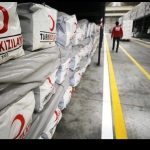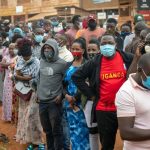SONNA – One billion people in 43 countries are at risk of cholera — a “pandemic killing the poor” — despite prevention and treatment being relatively straightforward, the United Nations warned on Friday.
The most heavily affected countries so far this year are Malawi and Mozambique. Nine other countries are deemed to be in “acute crisis”: Burundi, Cameroon, the Democratic Republic of Congo, Ethiopia, Kenya, Somalia, Syria, Zambia and Zimbabwe.
The UN branded the outlook bleak, saying it did not have the resources to fight the outbreaks, and the longer it took to start waging the battle, the worse the situation would get.
Between the World Health Organization and the children’s agency Unicef, the UN is seeking $640 million to fight the infectious disease, warning of a “cholera catastrophe” if action is not ramped up immediately.
“WHO estimates that a billion people across 43 countries are at risk of cholera,” said Henry Gray, the UN health agency’s incident manager for the global cholera response.
So far this year, 24 countries have reported cholera outbreaks, compared to 15 by mid-May last year.
Countries that are not usually affected by cholera are being affected and case fatality rates are far exceeding the typical one in 100.
Gray blamed the rise in cases on poverty, conflict and climate change, as well as the population displacements they trigger, which take people away from safer sources of food and water, and from medical support.
“With the increase in the number of countries affected by cholera, the resources that were available for prevention and response are more thinly spread,” he told a media briefing.
‘Wake-up call’
Cholera is contracted from a bacterium that is generally transmitted through contaminated food or water.
It causes diarrhea and vomiting, and can be especially dangerous for young children.
Jerome Pfaffmann Zambruni, the head of UNICEF’s public health emergency unit, said the rise in cases was “a wake-up call”.
“There is a pandemic killing the poor right in front of us and we know exactly how to stop it, but we need more support and less inertia from the global community because if we don’t act now, it’s going to get worse,” he said.
“We know how to treat it. We know how to control it. It’s not easy but it’s simple.”
Although cholera can kill within hours, it can be treated with simple oral rehydration, and antibiotics for more severe cases.
But many people lack timely access to such treatment.
Outbreaks can be prevented by ensuring access to clean water and improving surveillance.
“We won’t have enough, even with those numbers, if the current trend for cholera cases continues,” said Gray.
Cholera cases steadily declined over 10 years but the trend reversed in 2021.
But the lack of funds for rapid response will cost lives that could have been saved, said Gray.
“The overall solution is a long-term investment in wastewater infrastructure,” he added.
Vaccine shortage
The campaign is not helped by the dearth of vaccines.
Around 36 million cholera vaccine doses were produced last year, but it is not seen as an attractive product for manufacturers, as there is effectively no market in wealthy countries.
Over 18 million oral cholera vaccine doses have been requested this year, but only eight million have been made available, bringing prevention campaigns to a halt.
Rather than the full two doses, only one is being issued to recipients “to try to spin it out”, said Gray.
The number of available doses could double by 2025 and then double again by 2027.
Source: AFP





